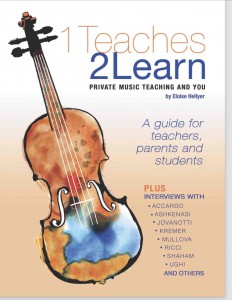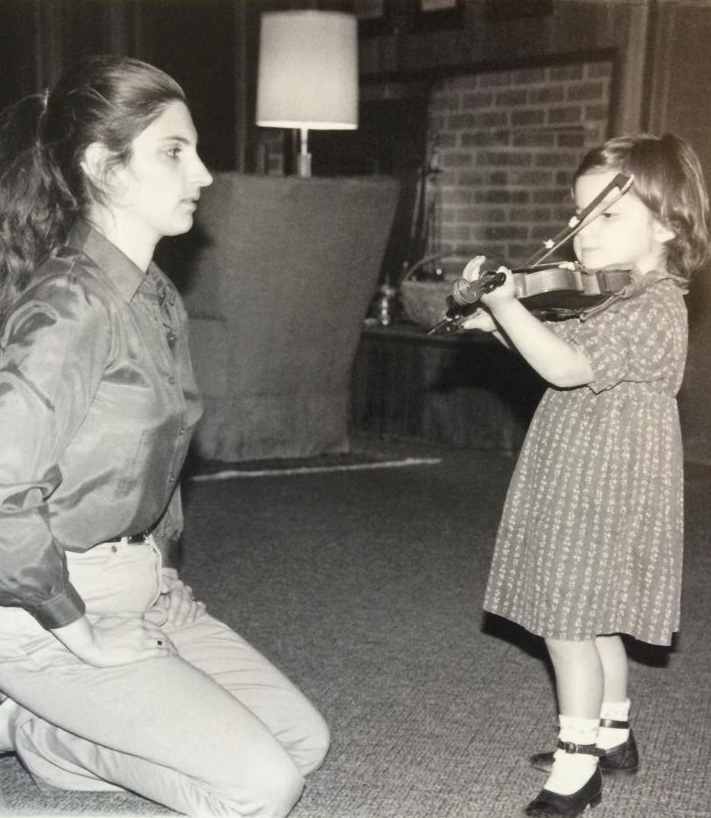Finding Balance, part 3: Teamwork
What do sports programs offer students that we music teachers usually do not?
A team.
One reason that students put music practice in last place among their daily assignments is that they see playing music as a solitary endeavor. Traditionally, this is true. A student practices and plays alone for many years before he is eligible to participate in an orchestra and start having some fun. Always being alone with an instrument can be demotivating for a child, however. He just doesn’t understand what all the practicing is for. What’s the remedy?
GROUP CLASSES + PERFORMANCES = TEAMWORK = PRACTICING = EVERYONE HAPPY
This is where we music teachers can slug it out with sports programs – by making music into a “team sport” which offers the camaraderie and fellowship of teamwork that young people love, but doing performances instead of competitive games.
But aren’t there local school and regional orchestras that take care of this?
While it is true that these orchestras promote teamwork and are surely a good experience for your young musicians, you have no control over what the orchestra plays or what parts they give your students and as their teacher you may often find yourself helping them learn their orchestra parts instead of doing the work YOU think is necessary for their progress. This is okay if your students also practice what you assign them, but if you have time-challenged students, they’ll tend to give practice priority to those “team” assignments over whatever you give them to do.
So form your own team! In my case, putting a small orchestra together came about gradually. I had always offered group lessons, but soon realized that I had to find other ways to stimulate my students to practice. So I started giving my older students very attractive pieces involving solo work, such as various Vivaldi concertos for four violins and orchestra. They soon realized that if someone didn’t practice his part, EVERYONE would notice it, driving home the point that if you don’t do your part, the others cannot do theirs, and that if you don’t show up for rehearsal then the others can’t even rehearse. You can’t let your team down!
I also pick pieces that will bump their technical levels up a notch and sometimes I let them choose the pieces. Not long ago my students asked if we couldn’t do “Summer” (3rd movement) from Vivaldi’s “Four Seasons,” which is all the rage in pop groups at the moment. Hmmm, I said. It turned out that even though I may eventually have to rustle up a soloist, these kids are so excited about playing this piece that they are willingly practicing all the scales in it. Even if we never play the piece in public it’s still of great value to them: they are having so much fun playing it in the group lesson that they are tackling its various technical problems and ARE LEARNING TO ENJOY SCALES. I have also assigned the solo parts of this particular piece to my more advanced students to get them to practice playing in higher positions without putting a gun to their heads (and so they finally understand why I always insist on those 5th position-and-up studies, scales and arpeggios). They’re having fun AND they’re practicing.
The trickle-down effect has the younger ones hearing all the various neat pieces the more advanced students play and deciding they had better learn to read music (some children resist), or use their wrists properly, or change positions correctly so they, too, can play them. I’ll admit that here I’m doing what’s good for my students, not necessarily what is good for Vivaldi. But he’s dead anyway – unless he’s up there somewhere listening. And even then, he above all would understand. Most people aren’t aware or forget that he wrote many of his concertos as teaching devices. A genius before his time (a sort of Italian Suzuki), he made learning to play the violin fun and 300 years later students still love his music so much they will practice it with enthusiasm.
I happen to have a pretty big class so forming a small orchestra is easy for me. If you have just a few students you can still get them to play together. There are lots of pieces that have harder and easier parts for different levels of expertise. I transcribe the viola parts of the concertos we play for my less advanced students, for example.
Yes, it’s time consuming and sometimes nerve-wracking but getting your students to work as a team is absolutely the best way I have found to lure them into doing what they don’t think they have time to do. And it’s also a lot of fun.
Next: One last thought. Really.
Share this:
Buy it on www.sharmusic.com - eBook format, avaliable worldwide, paperback in North America
COPYRIGHT
ABOUT
A music teacher’s thoughts and observations on the teaching and the study of a musical instrument, hoping to be of help to parents, students and teachers.
PHOTO
AWARDED TOP 25 VIOLIN BLOG
CATEGORIES
TAGS
ARCHIVES
-
Agosto 2022
Agosto 2023
Agosto 2024
April 2015
April 2016
April 2017
April 2019
April 2020
Aprile 2022
Aprile 2023
Aprile 2024
August 2014
August 2015
August 2016
August 2017
August 2018
August 2019
August 2021
December 2014
December 2015
December 2016
December 2017
December 2018
December 2019
December 2020
Dicembre 2022
Dicembre 2023
Dicembre 2024
Febbraio 2022
Febbraio 2023
Febbraio 2024
February 2015
February 2016
February 2018
February 2019
February 2020
February 2021
Gennaio 2022
Gennaio 2023
Gennaio 2024
Giugno 2022
Giugno 2022
Giugno 2023
Giugno 2024
January 2015
January 2016
January 2017
January 2018
January 2019
January 2020
July 2015
July 2017
July 2019
June 2016
June 2017
June 2018
June 2019
June 2020
June 2021
Luglio 2022
Luglio 2023
Luglio 2024
Maggio 2022
Maggio 2023
Maggio 2024
March 2015
March 2016
March 2017
March 2018
March 2019
March 2020
March 2021
Marzo 2022
Marzo 2023
Marzo 2024
May 2015
May 2016
May 2018
May 2019
May 2020
November 2014
November 2015
November 2016
November 2017
November 2018
November 2019
November 2021
Novembre 2022
Novembre 2023
Novembre 2024
October 2014
October 2015
October 2017
October 2018
October 2019
October 2020
October 2021
Ottobre 2022
Ottobre 2023
Ottobre 2024
September 2014
September 2015
September 2016
September 2018
September 2019
September 2020
September 2021
Settembre 2022
Settembre 2023
Settembre 2024
RECENT POSTS
Terry G and Me, or Terry Gilliam on Where (or What) Practicing the Piano Will Get You…
The Teaching We Don’t Do Is More Important Than We Think
Overwhelmingness or What Teaching and Motherhood* Have in Common
Cellphone Serenity
How to Build Your Reputation – the Kind You Want
Desperate Times, Desperate Measures. Or How to Deal With Your Strong-Willed Stubborn Student and Survive
“Why Does My Teacher Get So Frustrated?” Letter to a Perplexed Student
Mount Rush-no-more….And How to Get There
Realizzato con VelociBuilder - Another Project By: Marketing:Start! - Privacy Policy




